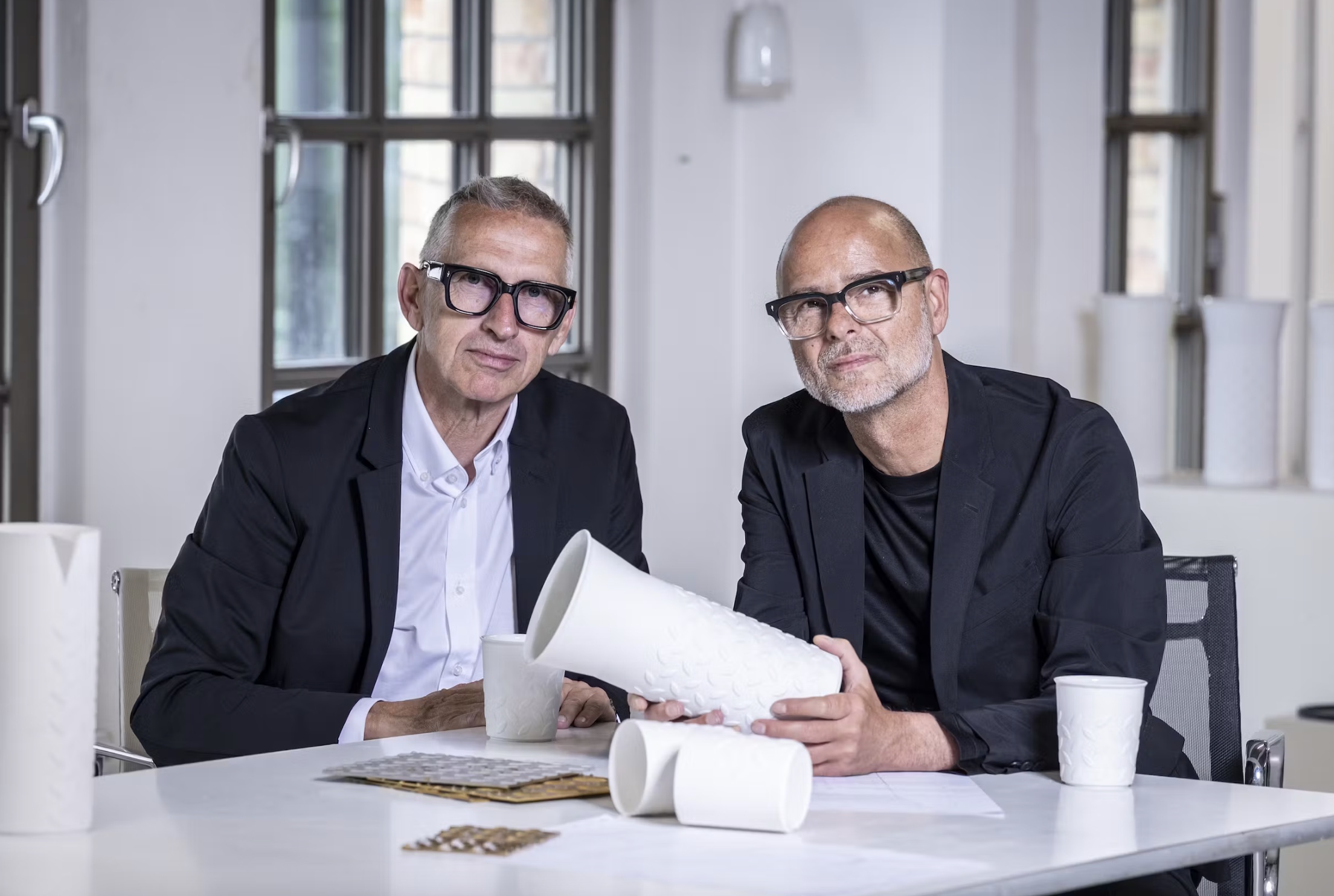Mr. Sedelmeier, what is it about the mandorla form that fascinates you the most?
RXS: On the one hand, it’s the pure aesthetics, both that of the individual mandorlas and that of the all-over arrangement. This will almost become a fashionable pattern with a floral appearance! On the other hand, the Mandorla is part of a design that is mostly used as a floor or mudguard, for example on construction sites. And I think it deserves more. Basically, I am enthusiastic about recharging and reinterpreting objects, materials and objects by withdrawing them from their actual purpose and thus freeing them from their pure functionality.
How did the leap from metal to porcelain go?
TW: I had been thinking for a long time about products that could have a relief. And Reiner’s industrial derivation fits wonderfully for this relief, a border would not work there. For me, a film was immediately shown on my inner screen, where it became clear: MANDORLA fits our collections and yet is not in competition with the existing products.
RXS: In reality, this ‘stupid’ floor plate is lying somewhere on the floor of a construction site. But transferring this directly to porcelain doesn’t work, it needs an intermediate step, and in this case that’s my furniture. For example, the lounger, where I actually only brought the material up 30 centimeters. When viewers look at the objects, they think: I know that from somewhere! And then the penny drops.
Many people also know the term from a completely different context, traditional iconography.
RXS: Yes, Mandorla is a technical term from art history and refers to a glory or aura around an entire figure. This distinguishes it from the halo, which only surrounds the head. Mandorls are interpreted as a visible expression of a figure’s power of light, healing and protection. Which, funnily enough, leads back to the mudguard, which has the same function. Protection is a big issue, we want protection, but at the end of the day we rarely get it, and that’s exactly what the porcelain says.

So, in the end, this is a transformational achievement?
RXS: Exactly. It’s about creating the contrast between the protective sheet steel and the fragility of the porcelain. The only thing I can deliver is the thought, the idea. Without the competence of the manufactory, however, the implementation would be inconceivable at all, it is incredibly nice to see the development process and the effort that is put into an object. This know-how and the overwhelming history… It’s great that a company with such a history is implementing such a contemporary approach.
You have chosen a cylindrical basic shape, why?
TW: Steel is traditionally rolled, so the starting position for me was clearly the cylinder, or in other words: the tube. As a 1:1 translation of the derivation, in which a material becomes a product. The viewer can then self-experience the tear plate. The fact that we have chosen biscuit porcelain as the material emphasizes the sharpness and accuracy and the tactile experience of the unglazed surface.

Mandorla will be launched as a permanent new collection by KPM Berlin on the one hand, and as a limited art edition on the other. What is the difference between the variants?
RXS: It’s the refinement that takes place here (and often in my other work) through surface application: metallic silver and gold, partly real gold, but also neon nuances in pink, orange and yellow… Depending on the incidence of light, the colour tones change, the reflections form a radiant shell around the actual mandorla. Which, in a way, somehow creates a very special aura.
Which product from the collection do you like best?
RXS: My favorite product is the cup, because it also has the feel. You take it in your hand and feel the structure – which you usually only enter with shoes.
TW: For me, it would be the vase. I find them formally very coherent in the context. It is precisely the uncompromising derivation from a consistent, geometric industrial form that makes it a modern but timeless sculpture. She combines this arc of suspense perfectly.
The transformation, industry, art and manufactory explores the crossing of boundaries of what is conceivable in an exciting way. A familiar “irritation” of viewing habits keeps an inner dialogue so alive.
